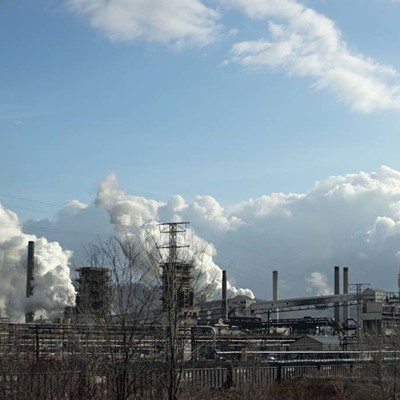How fast can we transition to renewable energy? The question seems a crucial one if we're to reduce greenhouse-gas emissions rapidly enough to prevent the worst effects of climate change. Yet there's little agreement over how soon, and even whether, a switch to all renewables is feasible.
At one pole are people like Stanford University engineering professor Mark Z. Jacobson. In 2009, in Scientific American, Jacobson co-wrote an article inspired by Al Gore's challenge to repower the U.S. with 100 percent carbon-free energy within a decade. One-upping Gore, Jacobson argued that by 2030, we could power the entire world solely with wind, solar, geothermal, tidal and hydroelectric power — collectively, WWS (wind, water, solar).
Sounds crazy, especially given how demand for energy is expected to grow in the developing world. But Jacobson showed that there's enough wind blowing and sun shining to do it. He contended that with a World War II-scale industrial push, civilization could craft the required 3.8 million large wind turbines, 90,000 solar plants and more, while beating internal-combustion engines into electric motors. The price of kicking fossil fuels looks steep — an estimated $100 trillion globally over 20 years. But Jacobson considers it an investment (repayable via sales of energy) that would leave us with cleaner air, less disastrous climate change, and fuel sources that were basically free.
Solar and wind now supply only 4.5 percent of U.S. electricity. More recently, Jacobson and colleagues published individual plans for 139 countries and all 50 U.S. states to reach 80 percent WWS by 2030 and 100 percent by 2050. (The timetable is somewhat more modest.) Political will for such plans might be scarcer than technical expertise, but the plans are getting some play. In 2013, Jacobson touted the U.S. plan on The Late Show With David Letterman. Better still, he says, his research influenced Gov. Jerry Brown to recently propose that California aim to generate 50 percent of its energy from WWS by 2030. "He actually proposed 50 percent of our plan," says Jacobson in a phone interview. New York Gov. Andrew Cuomo has also embraced parts of Jacobson's scheme for New York.
But critics doubt that such dramatic goals are viable. Typical are Nathaniel Gilbraith and three other Carnegie Mellon engineering professors who responded to Jacobson's WWS plan for New York, published in Energy Policy in 2013, with a scathing commentary. They wrote that Jacobson and his co-authors risked creating a system that made electricity unreliable and unaffordable, largely because wind and solar power are intermittent energy sources. They added that he had ignored the benefits of such "lower-carbon" energy sources as nuclear power in providing a base load for the electricity grid.
Jacobson responded that studies in both California and the northeastern U.S. show that solar and wind combined, supplemented by non-carbon sources like geothermal, can consistently meet demand. And he argues that nuclear is not low-carbon, due to emissions from the mining and refining of uranium, and to the "opportunity cost" of continuing to burn fossil fuels during the decade or more it takes to build a nuclear reactor.
What about energy conservation? Jacobson contends that simply switching to electric motors — much more efficient than internal combustion — would reduce energy demand by one-third. But the U.S. currently burns twice as much energy per capita as do many European countries, and even some critics of high renewable-energy targets like California's, let alone Jacobson's, agree that using less energy is the fastest, cheapest way to cut carbon emissions. Such critics include Jay Apt and two other CMU professors who wrote a 2013 article in Issues in Science and Technology arguing against renewables standards, saying that governments should set carbon-emissions limits, not choose the technologies to achieve them. Apt has estimated that wind and solar will peak at 30 percent of America's electricity. The authors supported conservation strategies like real-time pricing of energy and even a carbon tax or cap-and-trade system to reduce carbon emissions.
Whether we can adequately reduce carbon emissions without going all-renewable might be as big a question as whether we can go all-renewable. But perhaps conservation is a way forward that anyone not a fossil-fuel company can agree on — cheap itself, and with the ability to make any transition to renewables cheaper, too.













